As we all know, the body of a Tenmoku teacup is known as the "iron tire," which is one of the essential conditions for firing a Tenmoku teacup and an important characteristic that distinguishes it from other kilns' black-glazed teacups. However, can we determine whether a teacup is made of iron tire solely based on its color? Is a reddish-brown color not indicative of iron tire? Is it true, as some friends claim, that the darker the body, the higher the iron content?
One.The importance of affirming the iron tire for Tenmoku teacups.
- "For white tea, black teacups are preferred, and those made in Jian'an are dark blue-black with patterns resembling rabbit hair. Their clay bodies are slightly thicker and retain heat for a long time, making them the most desirable. Teacups made elsewhere may be thin or purple in color, but they are inferior." This passage from the "Tea Record" explains the importance of iron tire for Tenmoku teacups. During the Song Dynasty, when making whipped tea, the teacup needed to be heated over a fire. If the teacup was cold or cooled too quickly, it would not be easy to create a good foam, and the taste would be greatly reduced.
- Tenmoku teacups not only have iron tire, but also have a high iron content in the glaze. The interaction between these two elements creates natural and exquisite spots and flowing patterns. If the iron content in the tire is too low, the patterns may not be well-defined or appear incomplete. Therefore, ceramic artists from all over the world who are fond of developing Tenmoku teacups need to go to Shuiji, Jianyang to buy the proper tire clay. Two. Can we determine whether a teacup is made of iron tire solely based on its color?
1.It is important to note that Tenmoku teacups are fired in a reducing atmosphere, which usually results in an iron-grey color for the tire. However, some tires may appear reddish-brown, not because of low iron content, but because the atmosphere was oxidized. Therefore, if the tire does not appear to be very dark, do not rush to conclude that it is not made of iron tire. 2.Some so-called "Tenmoku" teacups may have an iron-grey color on the bottom of the tire, which looks very much like iron tire. Can we therefore conclude that they are made of iron tire? No, no, no! It could be that a layer of cosmetic soil was applied. However, local craftsmen in Jianyang generally do not go through the trouble of finding low-iron tire clay to make Tenmoku teacups, so you can rest assured about their authenticity.
If you have fragments of Song Dynasty Tenmoku teacups, you will notice that the broken surface of the tire is very dark. This color is indeed an external manifestation of the high iron content in the tire clay. However, some broken surfaces may appear reddish-brown, which is caused by prolonged exposure to air and oxidation. If you knock off another corner and examine the new broken surface, you will see how much darker the color is.
Can you explain in detail why some Tenmoku tea bowls have a body that is not dark enough?
There are two reasons: First, the atmosphere has not been fully restored; second, everyone has an inherent impression of the dark black lacquer on the bottom of electric kiln-built teacups.
- Under a reducing atmosphere, Fe2O3 in the body can be reduced to Fe3O4, which is commonly known as black iron ore or magnetite. If the reducing atmosphere is further increased, the body will gradually turn black.
- During the cooling stage of electric kiln-built teacups, a strong reducing atmosphere is manually created and even maintained until they are taken out of the kiln (which is why there is usually carbon powder left on the teacups when the kiln is opened, and holding them by hand will cause them to turn black). On the other hand, after firing in a wood-fired kiln, the kiln is immediately sealed and no more wood is added during the cooling stage. Therefore, even if a strong reducing atmosphere was created during firing, the reducing atmosphere will quickly weaken once the kiln is sealed. Once the remaining charcoal inside the kiln is burned out, the atmosphere will turn into a neutral or weak oxidizing atmosphere.
Therefore, the body of the Jian kiln in the Song Dynasty was often very dark inside, while the surface of the body was weakly oxidized during cooling, resulting in a brown-black or brown-yellow color.
Do you now understand why teacups made with high-iron content iron bodies can have different colors? To determine whether a teacup in hand is made with an iron body, one cannot rely solely on color, but also need to consider factors such as the sound and density when tapping it.


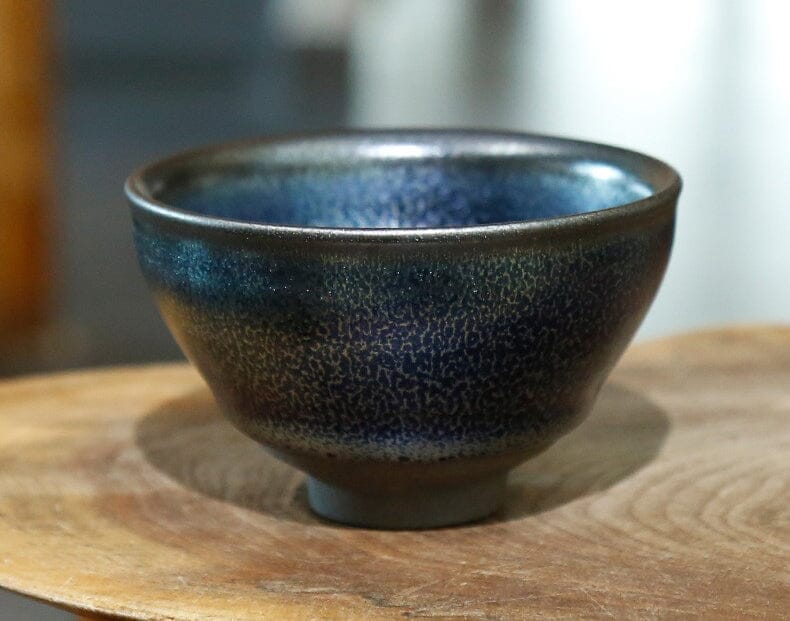
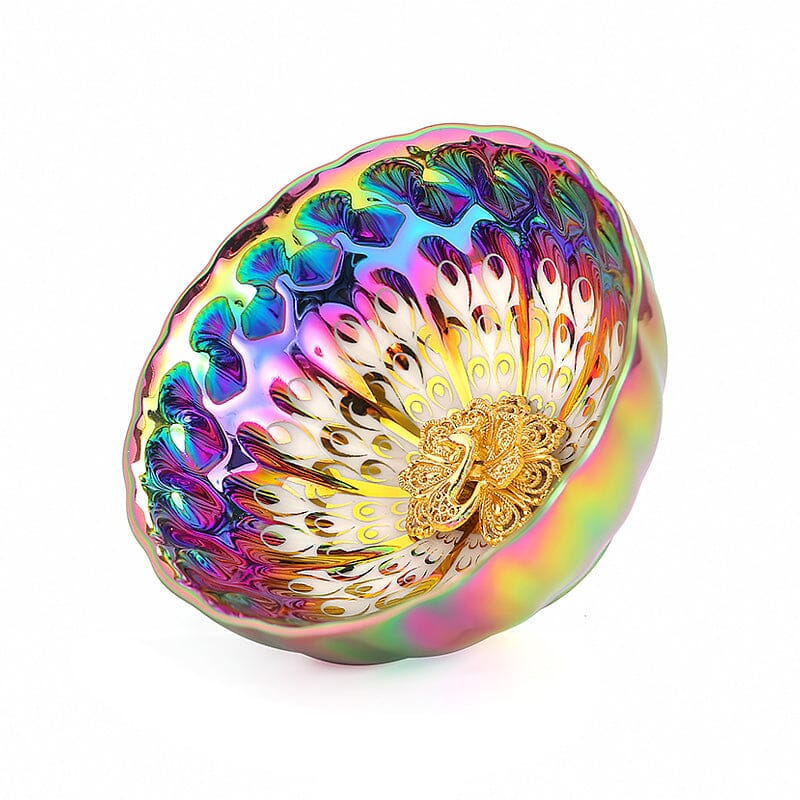
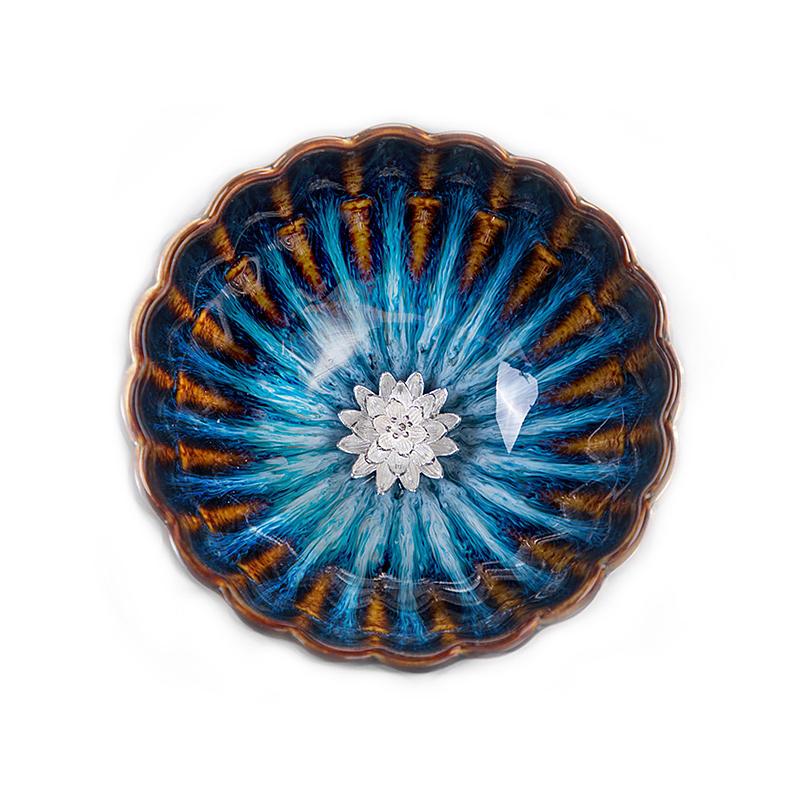
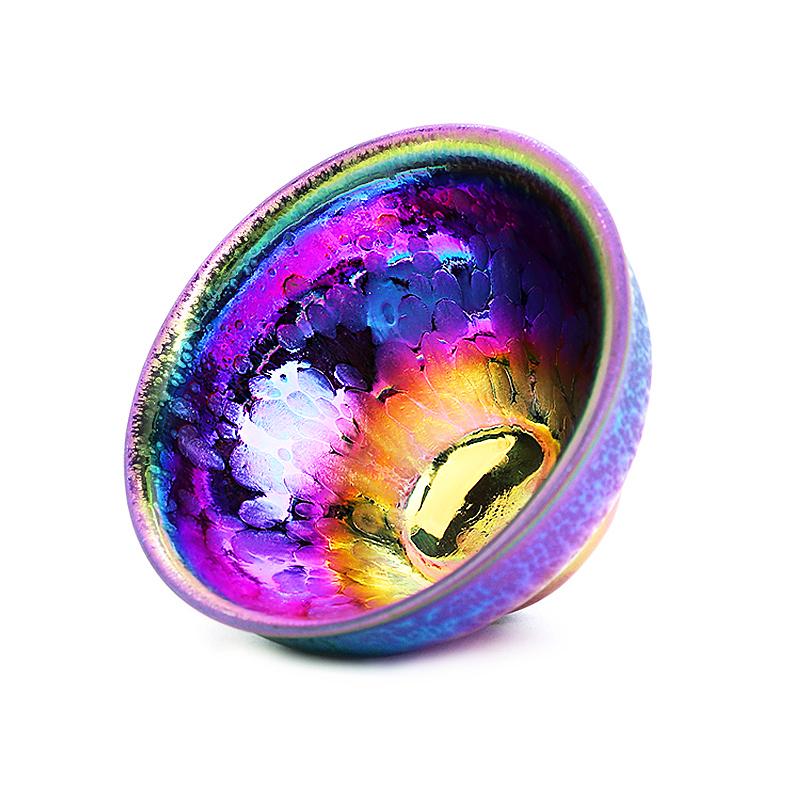
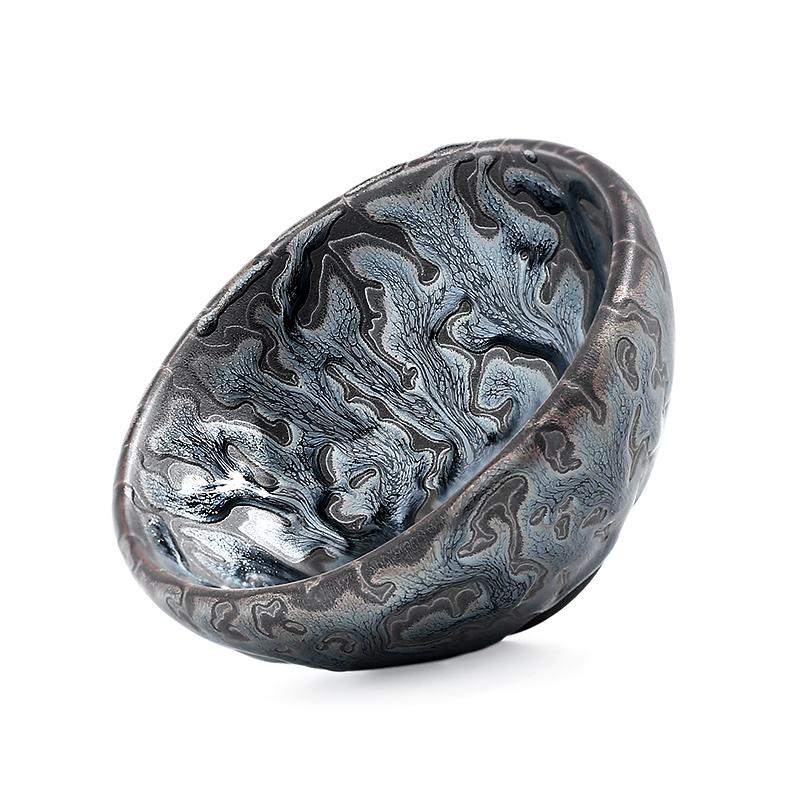
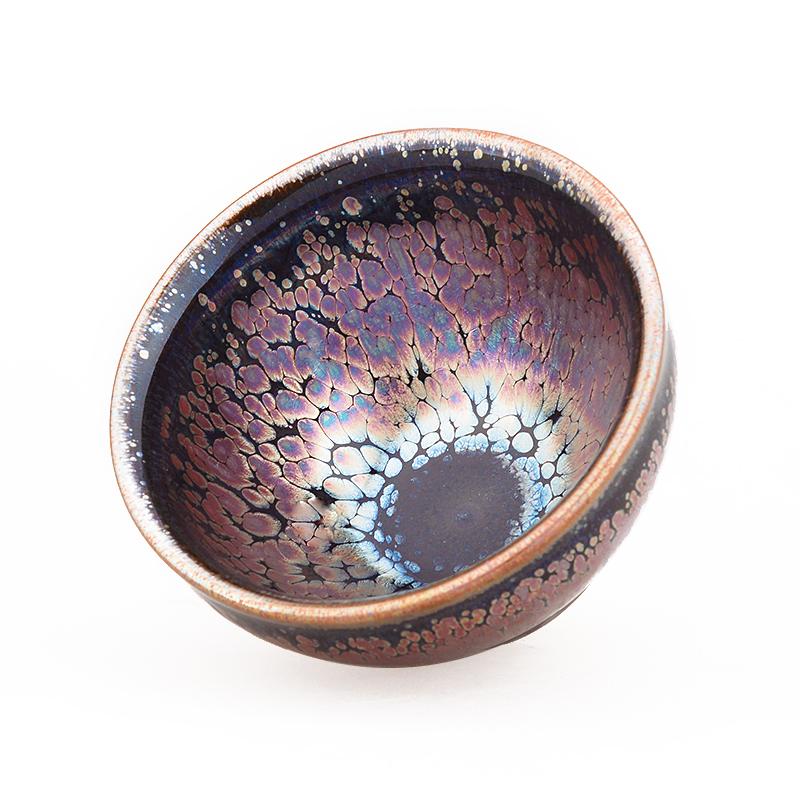
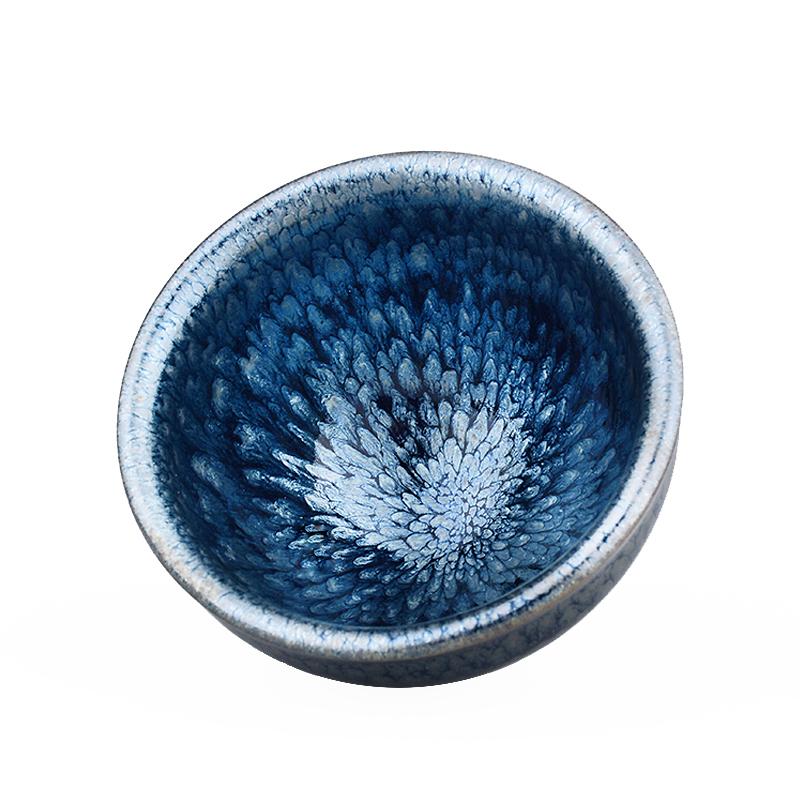
Share:
Collecting Tenmoku Teacups: 2 Focus Points, 5 Cautions
Do You Know the Purpose of Tenmoku Teacup's Bound Mouthline